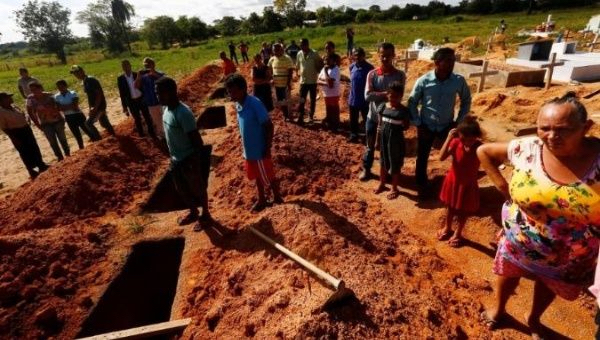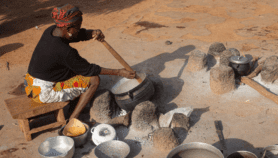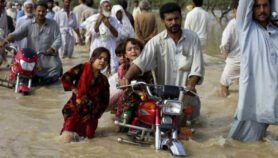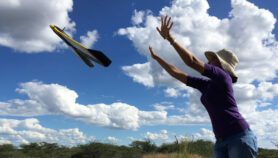Send to a friend
The details you provide on this page will not be used to send unsolicited email, and will not be sold to a 3rd party. See privacy policy.
The number of people killed defending the environment has doubled in the last 15 years, with four people killed each week trying to protect their land and resources, a report says.
Between 2002 and 2017, 1,558 ‘environmental defenders’ were killed across 50 countries, with 75 per cent (1,171) of those in Latin America, according to the study published in the journal Nature Sustainability.
Scientists from the universities of Queensland, Australia, and Oxford and Sussex, in the United Kingdom, said those killed were protecting land, forests, water and other natural resources. They included community activists, lawyers, journalists, members of social movements, aid workers and indigenous people.
“The strong demand for natural resources combined with a weak rule of law makes Latin America one of the worst regions in the world on this issue.”
Nathalie Butt, University of Queensland, Australia
Researchers said the violence was mostly linked to the mining industry and agribusiness, resulting from conflicts over natural resources such as wood, water or minerals.
According to the investigation, of the 16 Latin American countries that constitute three quarters of the deaths, Brazil tops the list with 609 murders, followed by Colombia (164), Honduras (138), Peru (79), and Mexico (66). The only country outside the region that reached this level of violence, the report said, was the Philippines with 192 deaths.
Nathalie Butt, a researcher at the faculty of biological sciences at the University of Queensland and lead author of the study, said the increase in deaths could be explained in part by better access to information, though this remains limited in some countries.
“The lack of information is a problem in countries with a weak rule of law. Even so, we can definitely say that there is a large increase in the number of deaths reported, which may be a reflection of the actual figure,” she told SciDev.Net.
Patricia Araya, a lawyer for the environmental justice organisation Fima, told SciDev.Net: "On the one hand, the numbers that deliver this work are very worrying, but, on the other, it is positive that the subject is studied, because there are many dark figures."
It is not only about the extreme cases that end in deaths, she added, but also the threats, intimidation and attacks that go unreported.
While the fight for resources is the main cause of violence, corruption also plays a part, the study highlighted.

Researchers compared four natural resource sectors – agriculture, forestry, mining, and water – with the number of deaths per million inhabitants for each country, and looked at the rule of law in each nation.
"There was no significant correlation between these four sectors and the deaths, but there was a very strong correlation between killings and corruption," said Butt. "The strong demand for natural resources combined with a weak rule of law makes Latin America one of the worst regions in the world on this issue."
High levels of corruption surrounding these cases may also explain why little more than 10 per cent of the murders globally result in a conviction.
The study highlighted the 2017 massacre of 10 land activists at Pau D’Arco, Brazil, as an example of a case where police were the main suspects.
Andrea Sanhueza is an elected representative of the civil society for the negotiation of the Escazú Agreement, an environmental treaty for Latin America and the Caribbean. She said that not only does Latin America have a large percentage of the world's natural resources, it also has the largest concentration of indigenous communities.
"It is in those areas that mining and energy exploitation are taking place, with the consequent conflict with communities," she told SciDev.Net.
Between 2015 and 2017, at least 121 indigenous activists were killed worldwide. Of those deaths, 82 occurred in Latin America.The Escazú Agreement is a treaty on access to information, public participation and access to environmental justice in the region, which could help shed light on some of these cases. “It takes 11 countries to ratify it so it can go into operation. We hope this will be achieved by the end of 2020,” said Sanhueza.














